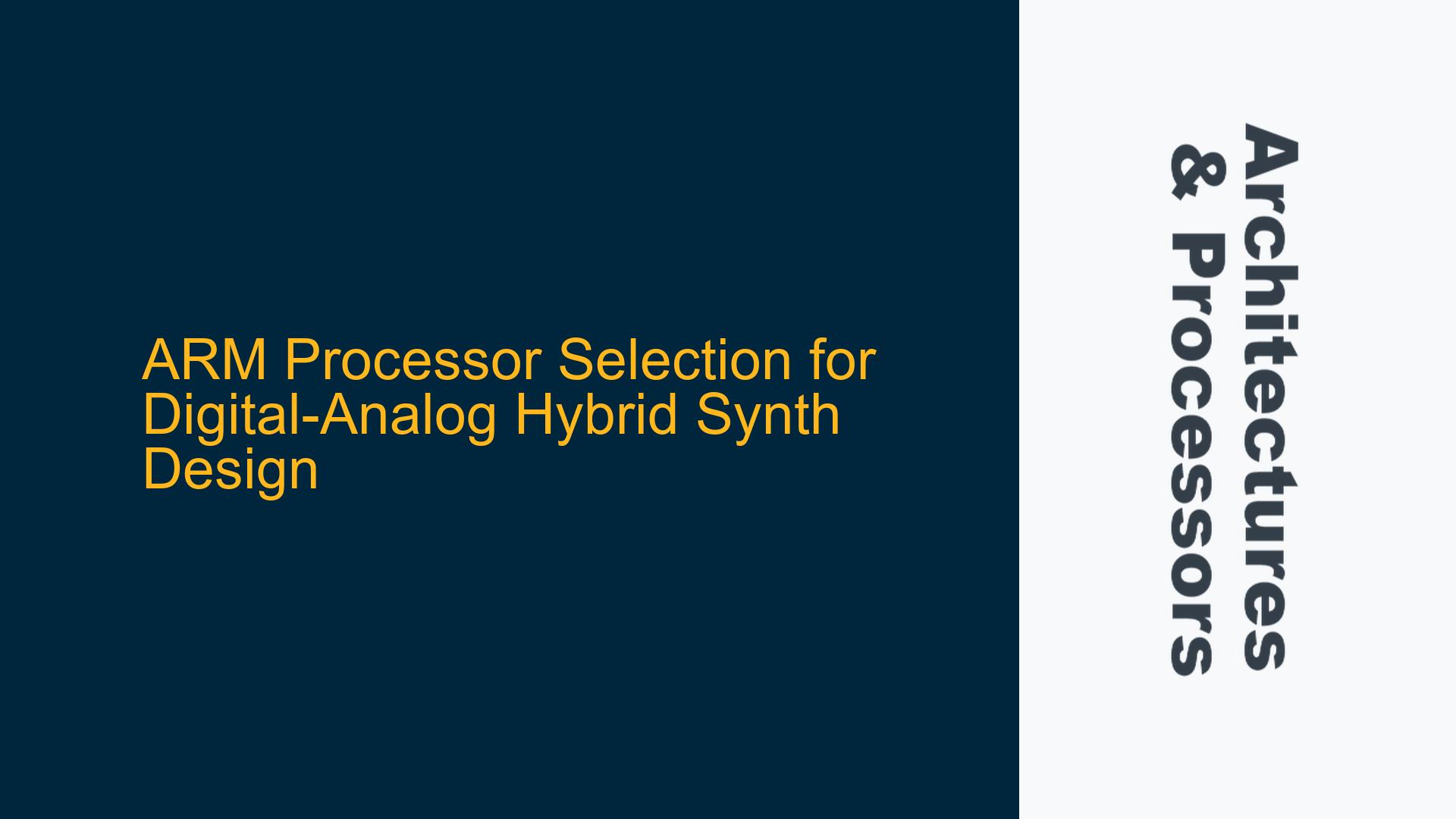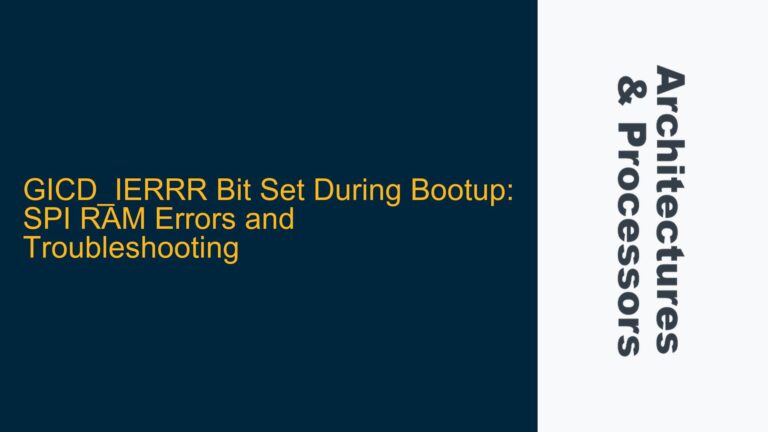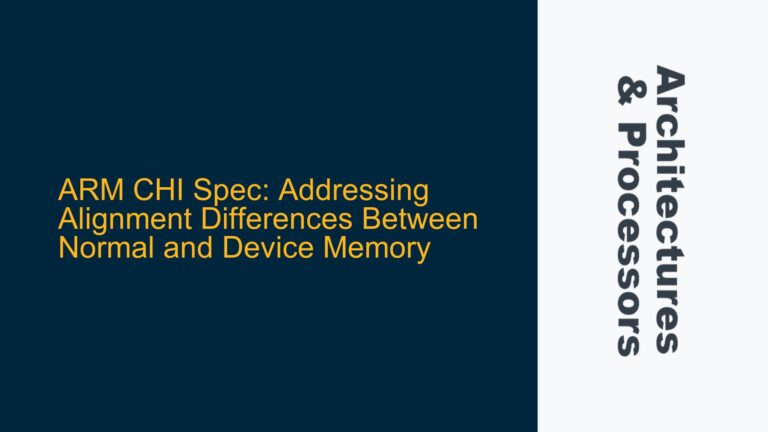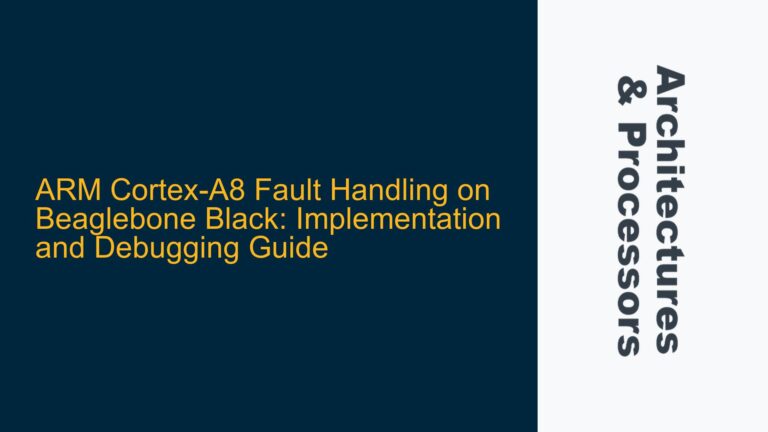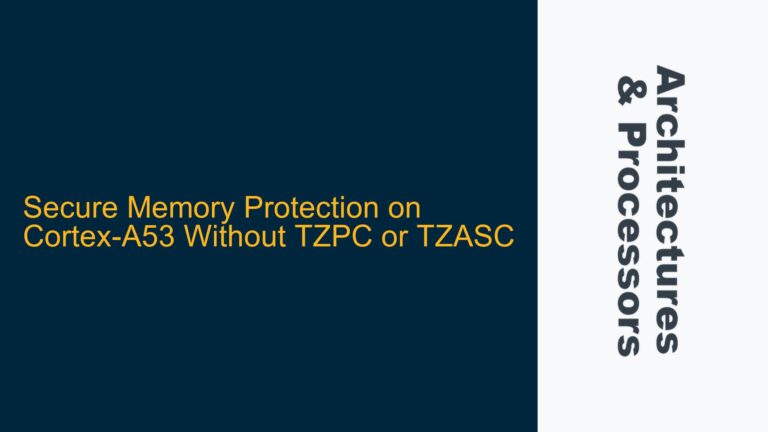ARM Cortex-A Series for Real-Time Oscillator Emulation and UI Rendering
The core challenge in designing a digital-analog hybrid synthesizer lies in selecting an ARM processor capable of handling real-time oscillator emulation, UI rendering, and interfacing with analog signal paths, FPGAs, and DSPs. The oscillator emulation requires low-latency processing for wavetable, virtual analog, FM, sample/granular, and additive synthesis techniques. Simultaneously, the processor must manage a responsive UI, control signal paths, and interface with external peripherals such as displays, USB, and audio I/O. The ARM Cortex-A series, particularly the Cortex-A53 or Cortex-A72, emerges as a strong candidate due to its balance of performance, power efficiency, and scalability. These processors support ARM’s Advanced SIMD (NEON) technology, which is crucial for accelerating digital signal processing tasks like oscillator emulation and effects processing. Additionally, the Cortex-A series integrates well with ARM’s AMBA AXI bus, enabling seamless communication with FPGA and DSP co-processors.
The Cortex-A53, for instance, offers a dual-issue, in-order pipeline architecture that ensures deterministic latency, which is critical for real-time audio processing. Its support for ARMv8-A architecture provides access to 64-bit processing, enhancing the precision of floating-point calculations required for high-quality audio synthesis. The Cortex-A72, on the other hand, delivers higher performance with its out-of-order execution and deeper pipeline, making it suitable for more complex synthesis algorithms and higher-resolution UIs. Both processors support ARM’s TrustZone technology, which can be leveraged to secure sensitive audio data and firmware in a commercial product.
For UI rendering, the Cortex-A series integrates Mali GPUs, such as the Mali-T860 or Mali-G71, which can handle high-resolution displays and complex graphical interfaces. These GPUs support OpenGL ES and Vulkan, enabling the development of visually rich and responsive UIs. The integration of a GPU within the SoC reduces the need for external graphics processors, simplifying the design and reducing power consumption.
Integration Challenges with FPGA and DSP Co-Processors
One of the primary challenges in this design is ensuring seamless integration between the ARM processor, FPGA, and DSP co-processors. The ARM processor must efficiently offload tasks like effects processing and signal routing to the FPGA and DSP while maintaining low-latency communication. The AMBA AXI bus protocol is instrumental in achieving this integration. AXI provides high-bandwidth, low-latency communication between the ARM processor and peripherals, ensuring that data transfers between the processor, FPGA, and DSP are efficient and deterministic.
The FPGA can be used to implement custom signal processing algorithms, such as reverb and delay effects, which require high parallelism and low latency. The DSP, on the other hand, can handle computationally intensive tasks like compression and filtering. The ARM processor must coordinate these tasks, ensuring that data flows smoothly between the digital and analog domains. This requires careful configuration of the AXI bus fabric, including the use of Quality of Service (QoS) settings to prioritize real-time audio data over less time-critical tasks like UI updates.
Another challenge is managing the power domains of the ARM processor, FPGA, and DSP. The ARM processor must be able to dynamically scale its performance and power consumption based on the workload, while the FPGA and DSP may need to operate in low-power modes when not in use. ARM’s big.LITTLE architecture, which combines high-performance Cortex-A cores with power-efficient Cortex-A cores, can be leveraged to achieve this balance. For example, the Cortex-A53 can handle background tasks and UI rendering, while the Cortex-A72 takes over during intensive synthesis and effects processing.
Optimizing Latency and Performance for Real-Time Audio Processing
To achieve low-latency audio processing, the ARM processor must be configured to minimize interrupt latency and ensure deterministic execution of real-time tasks. This involves configuring the processor’s interrupt controller, such as the ARM Generic Interrupt Controller (GIC), to prioritize audio-related interrupts. The processor’s cache hierarchy must also be optimized to reduce memory access latency, which is critical for real-time oscillator emulation and effects processing.
The use of ARM’s Advanced SIMD (NEON) technology is essential for accelerating digital signal processing tasks. NEON provides parallel processing capabilities that can significantly speed up operations like Fast Fourier Transforms (FFTs) and finite impulse response (FIR) filtering, which are commonly used in audio synthesis and effects processing. The ARM processor’s floating-point unit (FPU) must also be configured to handle high-precision calculations required for high-quality audio synthesis.
For the analog signal path, the ARM processor must interface with analog-to-digital converters (ADCs) and digital-to-analog converters (DACs) to convert between the digital and analog domains. This requires careful configuration of the processor’s peripheral interfaces, such as I2S or SPI, to ensure low-latency and high-fidelity audio conversion. The processor’s direct memory access (DMA) controller can be used to offload data transfer tasks, reducing the load on the CPU and ensuring smooth audio playback and recording.
In summary, the ARM Cortex-A series, particularly the Cortex-A53 and Cortex-A72, is well-suited for the demanding requirements of a digital-analog hybrid synthesizer. These processors offer the performance, scalability, and integration capabilities needed to handle real-time oscillator emulation, UI rendering, and interfacing with FPGA and DSP co-processors. By leveraging ARM’s AMBA AXI bus, NEON technology, and big.LITTLE architecture, designers can achieve a balance of performance, power efficiency, and low latency, ensuring a high-quality audio experience for end-users.
